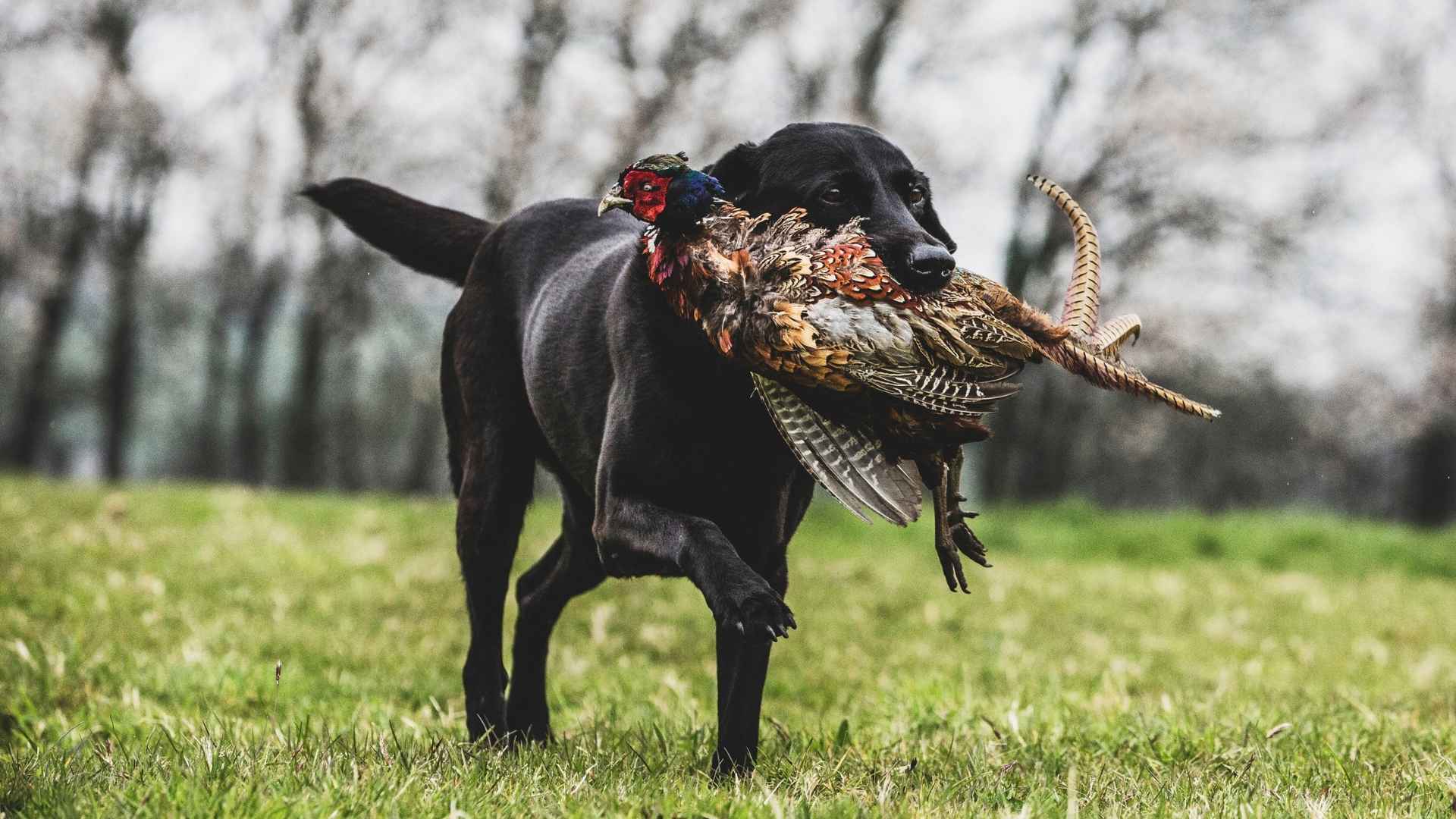You’ve got the boots, the field, the open sky, but the dog just runs. Every noise triggers movement, every bird missed. It’s frustrating.
You don’t need a dog that just chases—you need a partner that spots. A dog that sees before the sound, stills before the movement, and tells you without barking that the bird is there. Not all breeds are made for this kind of focus.
The ability to spot a bird the instant it lands isn’t something you can train into any dog—it’s built into a few, and it shows in the way they stand, watch, and move.
In this article, we’ll guide you through dog breeds that can spot birds landing on fields instantly—breeds bred for sharp sight, calm strength, and silent signals.
Dog Breeds That Spot Birds Landing On Fields Instantly
1. Boykin Spaniel
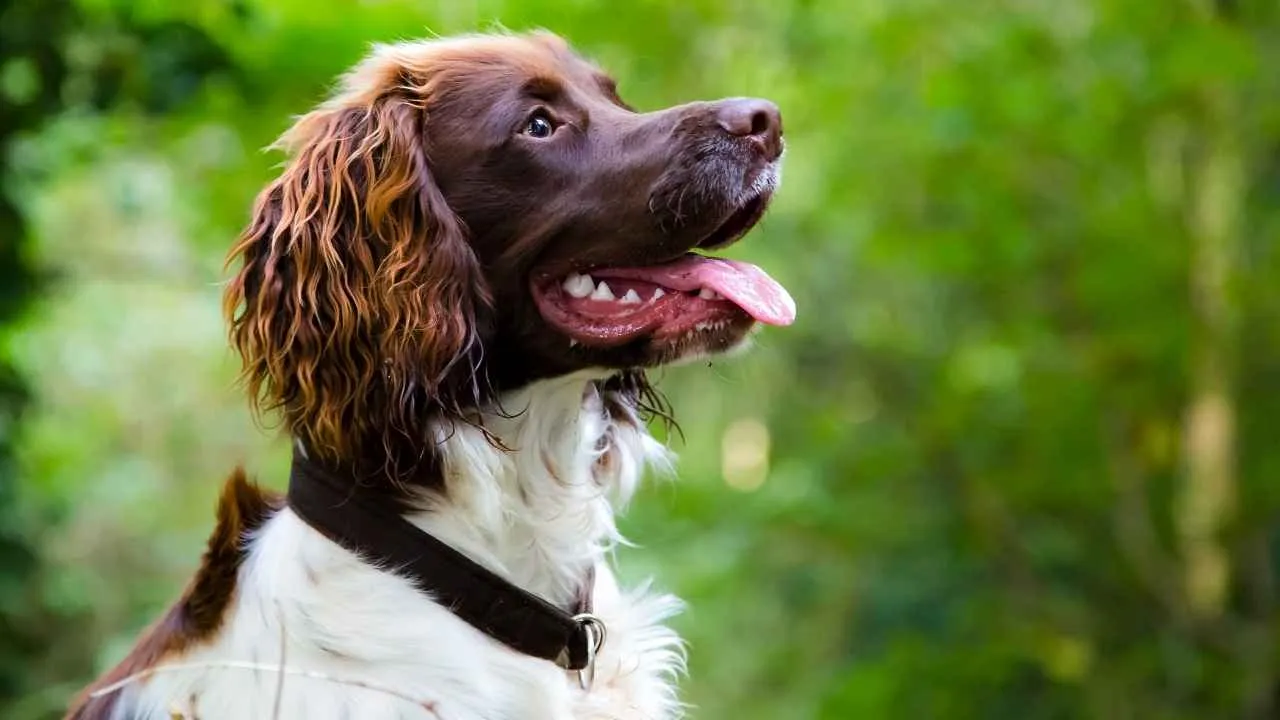
Boykin Spaniels have an exceptional ability to detect slight motion across open fields. Their eyes seem wired to pick out even distant fluttering, giving them an edge in spotting birds just as they touch the ground. This visual precision is one of their defining field traits.
Alert Without Being Hyper
This breed maintains a steady, focused energy that allows them to stay calm while scanning their surroundings. They don’t spook easily and can hold attention longer than many upland breeds. That balance helps them catch movement the second a bird lands.

A Nose That Confirms What Eyes Catch
Once the eyes spot it, the nose confirms it. Boykins works in a tight sync between sight and scent, often guiding handlers straight toward landing zones. This combo makes them a trusted choice among handlers looking for precision in the field.
Respected Among Hunting Partners
The Boykin has steadily earned its place among seasoned handlers as a reliable hunting dog breed. According to the Showsight Magazine, their sharp instincts and steady temperament make them dependable hunting companions, especially in bird-heavy regions where fast reaction matters.
2. English Cocker Spaniel

English Cocker Spaniels have sharp visual focus that makes them great at tracking birds mid-flight and catching landings in motion. Their ability to scan and react quickly in open terrain has made them a preferred companion in dense fields. Precision in watching bird movement is instinctive for them.
Built for Work in Thick Cover
With a compact build and high stamina, they’re known for moving confidently through brush and field edges, as mentioned in WebMD. This allows them to stay close to bird landing spots and flush game with impressive timing. Their field performance is a mix of agility and alert tracking.
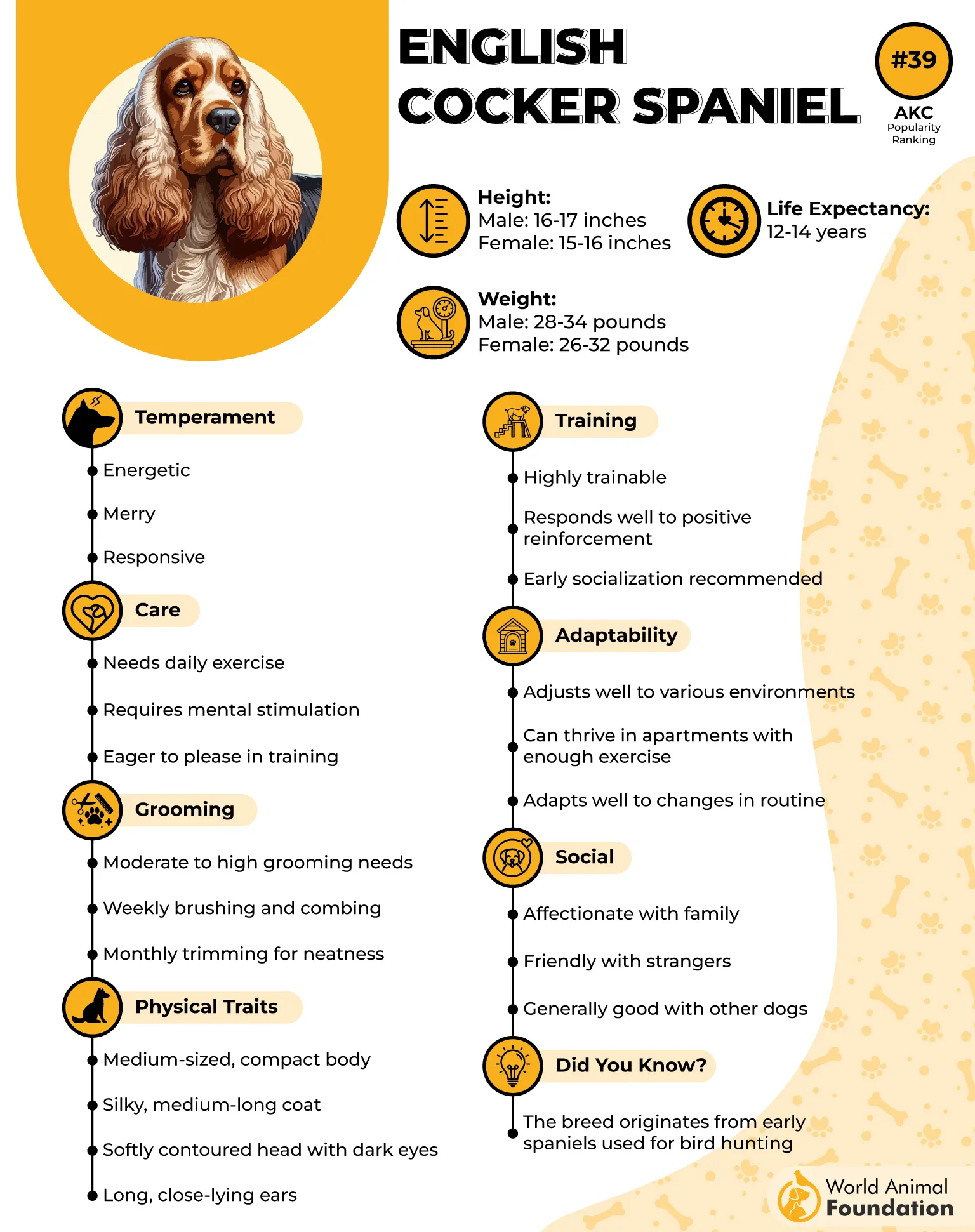
Instinctive Responses in the Field
These dogs read subtle cues like a bird’s wing shift or drop in elevation before most others would react. This fast and natural response has earned them a trusted spot among skilled handlers. Their attentiveness makes them reliable without constant commands.

Widely Respected in the Hunting Dog World
Among bird dogs, they consistently stand out for both skill and consistency. They are regularly listed among the best bird dog breeds due to their blend of drive, awareness, and sharp sight. Their long-standing reputation has deep roots in upland hunting traditions.
3. Vizsla
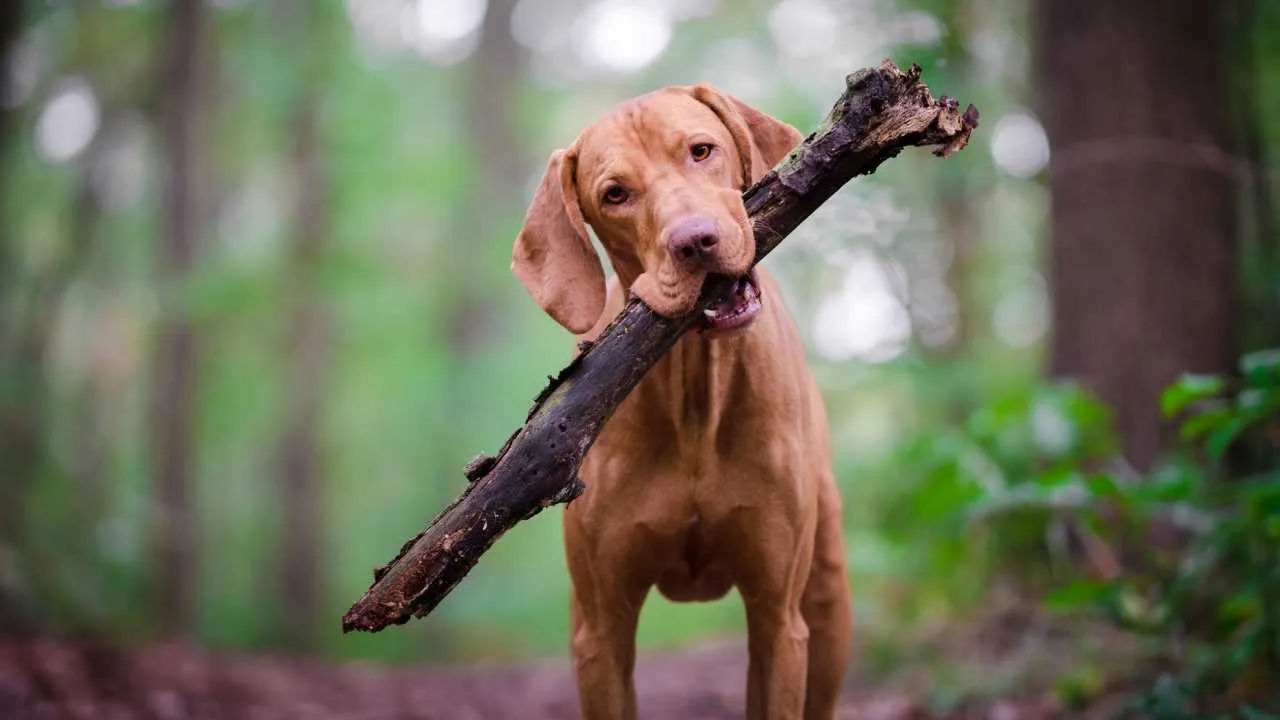
Vizslas are naturally wired to notice fast movement across open spaces, even at a distance. They react to birds landing on fields with quick attention shifts that hunters have come to rely on. That visual sharpness is part of what defines their field reliability.
Instinctive Pointing with Precision
As a classic pointing dog, the Vizsla’s still-body stance signals when it has locked onto a target. They don’t just chase; they mark, pause, and hold position until given direction. This control keeps them focused even during rapid bird landings.
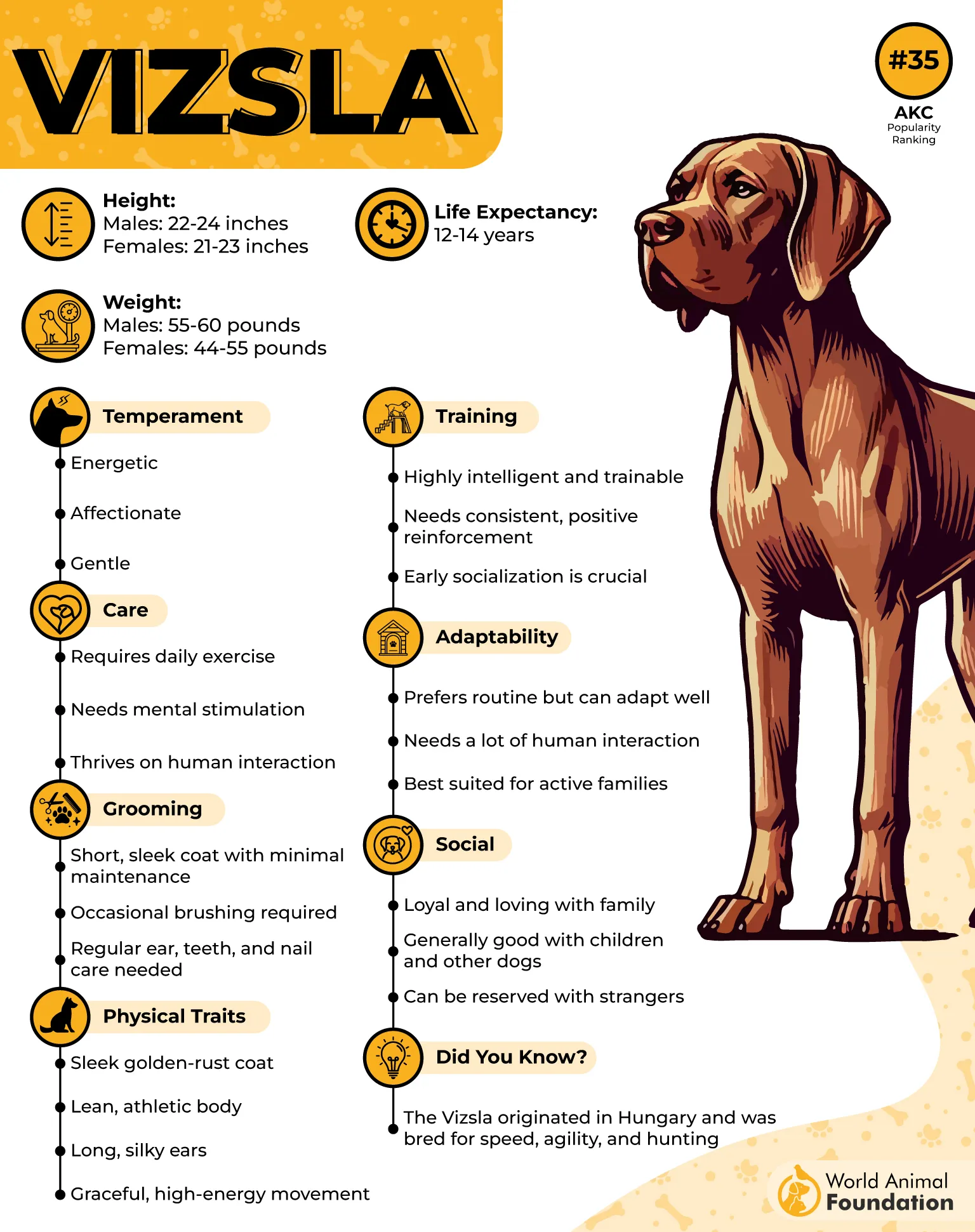
Designed for All-Day Field Work
With long legs and a streamlined build, Vizslas were developed to cover ground efficiently without tiring. These athletic dogs thrive in wide-open environments where birds settle unpredictably. Their stamina supports extended field work without mental or physical drop-off.
Built for Bird Hunting Teams
This breed was developed to work closely with handlers, making communication in the field feel natural. In bird hunting, their ability to scan, mark, and hold without disrupting the environment makes them especially valued during upland game searches.
4. English Springer Spaniel
English Springer Spaniels are known for their ability to keep their gaze steady across open terrain. Their eyes scan for sudden movement across brush lines or stubble fields, reacting quickly to the flutter of feathers. Their visual awareness is deeply instinctive, not taught.
Purpose-Built Hunting Style
Their traditional hunting style involves flushing birds from cover while staying close to their handler. This close-range cooperation makes them especially sharp at noticing birds as they land or settle in nearby patches. They adjust quickly and with a sense of timing.
Recognizes a Range of Bird Species
Spaniels are trained to recognize and respond to different bird species, whether it’s a slow-dropping pheasant or a quick darting quail. Their response changes subtly depending on the bird’s behavior and landing pattern, making them highly adaptable in mixed-field environments.
Reliable Outdoors, Mannered Indoors
Their ability to stay calm indoors while remaining sharp in the field makes them one of the few gun dogs that are also good house dogs. This dual nature has contributed to their reputation among families who enjoy both weekend hunting and a quiet home setting.
5. Labrador Retriever
Labradors are known for their sharp visual tracking, developed through generations of retrieval work in waterfowl hunting. Their ability to scan fields while staying alert to subtle wing flutters makes them ideal for spotting movement fast. Their success lies in this steady field awareness.
Patient Watchers with a Purpose
Unlike breeds that rely on quick bursts, Labs often remain still, eyes locked on distant motion. This focused pause allows them to notice birds dropping into tall grasses or brush. Their composure makes them dependable in dynamic field situations.
Eager Brains with Reliable Recall
Labradors respond quickly to subtle cues and signals, often requiring minimal direction once trained. Their eagerness to please works in favor of bird spotting, as they stay engaged and focused for long periods. Pairing this with mental stimulation ensures they stay sharp during work.
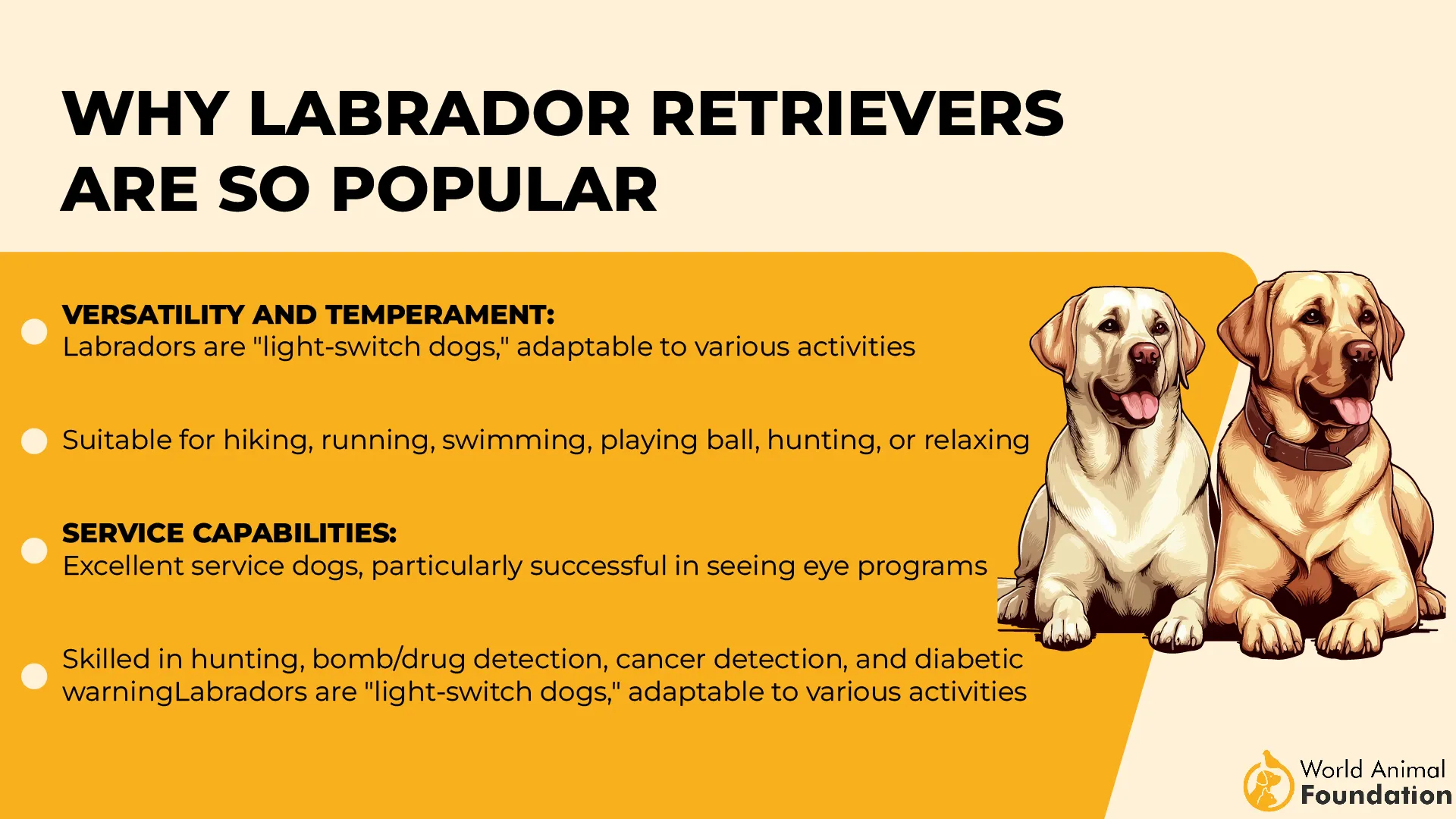
Trusted Worldwide by Handlers
Labs remain a popular breed for fieldwork and retrieval for good reason. Their ability to balance observation, stamina, and responsiveness makes them valuable hunting companions. Generations of selective breeding have kept these instincts reliably intact.
6. Nova Scotia Duck Tolling Retriever
This retriever has sharp vision designed to follow the flight and landing of waterfowl across wide fields. Their attention to distant movement and quick response timing makes them effective in open terrain. Watching birds drop is instinct, not training, in this breed.
Movement That Draws Curiosity
These dogs are known for their playful antics near shorelines, a behavior used to lure birds within range, as highlighted by the AKC. Their quick footwork and darting motion keep ducks curious enough to approach. This unique trait directly supports spotting and flushing birds into view.
Focused but Full of Energy
Unlike dogs that burn out fast, Tollers manage high energy without losing precision. They hold visual contact even when active, which gives them an edge in spotting birds as they land. Few breeds show this level of balance between drive and control.
Adaptable Both in the Field and at Home
While powerful in hunting environments, they’re also known for thriving in settings that value human companionship. Their trainability, eagerness to engage, and even temperament make them excellent family pets without dulling their natural field instincts.
7. Golden Retriever
Golden Retrievers have a natural awareness that makes them quick to spot movement across open fields. Their ability to track subtle bird landings ties back to their original role in retrieving waterfowl, where split-second reactions made all the difference.
Trained Eyes with a Calm Body
Unlike hyper-reactive breeds, Goldens observe the field with a steady, patient gaze. This helps them notice bird activity without startling anything nearby. Their control allows handlers to rely on their cues before making a move.
Eager to Mark Landing Zones
These dogs show a strong desire to mark the exact spot where birds drop. Whether in open grass or low brush, they’ll follow eye contact with smooth movement. They’re guided by instinct but shaped by training, which keeps their spotting skills sharp.
Decades of Field-Tested Reliability
Golden Retrievers are consistently chosen for hunting roles due to their strong memory and dependable nature. Their history as upland and waterfowl retrievers still reflects in their work today, especially when tracking birds across complex field patterns.
8. German Shorthaired Pointer
German Shorthaired Pointers are known for tracking birds mid-air and tracing their descent with pinpoint accuracy. Their forward-set eyes and sharp head movements make it easy to identify landing spots across open terrain. This natural trait plays a huge role in field performance.
Muscle Memory for Field Patterns
They remember the layout of hunting grounds after very few exposures. This mental mapping, paired with sharp visual recall, helps them anticipate where birds might land next. They often reach the right patch before a handler gives direction.
Instant Body Freeze on Bird Sighting
The GSP’s iconic point happens the moment a bird is spotted. They stop mid-stride, tense up, and hold position with striking precision. This pause is not for effect — it’s a communication tool used to signal the exact location to hunters.
Built for Speed and Focus Combined
They cover ground quickly without losing sight of movement in the distance. Their body stays aligned with visual targets, making them one of the most efficient bird-spotting breeds across upland and open-field terrains.
9. Irish Setter
Irish Setters are known for their sweeping field scans and responsive gaze. They can detect sudden movements across wide-open terrain with impressive consistency. That natural alertness helps them catch birds landing before other cues even develop.
Speed Meets Visual Tracking
This breed combines quick reactions with strong directional focus. They don’t randomly rush through brush — instead, they visually track subtle changes and align their movement with precision. That makes them efficient in both spotting and flushing.
Smooth Movement Across Rough Fields
Their long legs and balanced gait give them an advantage in large fields and variable landscapes. They move without disturbing the environment too much, which helps when waiting for birds to land before advancing. It’s instinctive, not just trained.
Historical Role in Bird Work
Irish Setters have been bred for generations with a clear purpose in mind: upland game birds. Their strong eyesight and desire to locate game through visual cues remain key reasons they’re still used by seasoned field handlers today.
Conclusion
Some dogs were originally bred to sit still and signal. Others were made to retrieve upland birds without needing loud commands. Whether you work with a pointing breed or one that moves with you across rough ground, knowing what each offers helps.
Many bird hunters use the same breed for years, but newer handlers often mix in other breeds for different terrain. From kennel favorites to rescue dogs, bird work runs deep. Even the most popular dog breeds may surprise you with their instincts.
If your days involve wind, brush, and the distant flutter of upland birds, these dogs were built to meet you there—steady eyes, steady pace, steady heart.


